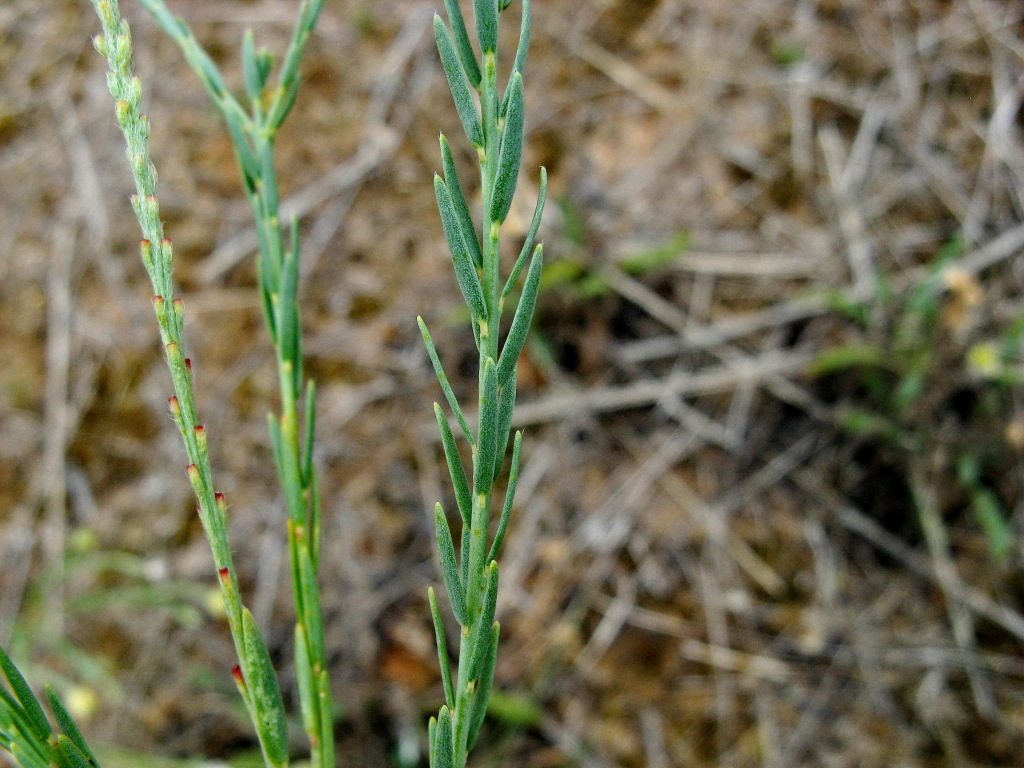Pimelea trichostachya
Lindl. Annual Rice-flowerSemi-woody annual, 15–60 cm high; stems sparsely hairy when young. Leaves alternate or rarely almost opposite, shortly petiolate, narrowly elliptic or linear, 4–12 mm long, 0.5–2 mm wide, concolorous, usually pale green, sparsely hairy but becoming glabrous. Inflorescence terminal, initially head-like and c. 1 cm long and wide, but elongating in fruit to a distinct spike, usually to 5 (rarely to 15) cm long, many-flowered; involucral bracts absent or not differentiated from leaves. Flowers bisexual, densely white-hairy outside, glabrous inside; floral tube 3–5 mm long, style-portion shorter than ovary-portion, circumscissile above ovary, persistent base grey in fruit; sepals erect, c. 0.5 mm long; pedicel hairy; stamens inserted below sepals, almost sessile in throat; anthers opening somewhat laterally; style not or little exserted. Fruit dry, enclosed. Flowers Aug.–Dec.
LoM, MuM, MSB, RobP, MuF. Also WA, NT, SA, Qld, NSW. Grows on deep sand in mallee areas of the far north-west. Occurs in all mainland States.
The elongate and usually interrupted inflorescences with fluffy white flowers distinguish this taxon from other mallee species of Pimelea.
Entwisle, T.J. (1996). Thymelaeaceae. In: Walsh, N.G.; Entwisle, T.J., Flora of Victoria Vol. 3, Dicotyledons Winteraceae to Myrtaceae, pp. 912–930. Inkata Press, Melbourne.
 Spinning
Spinning



